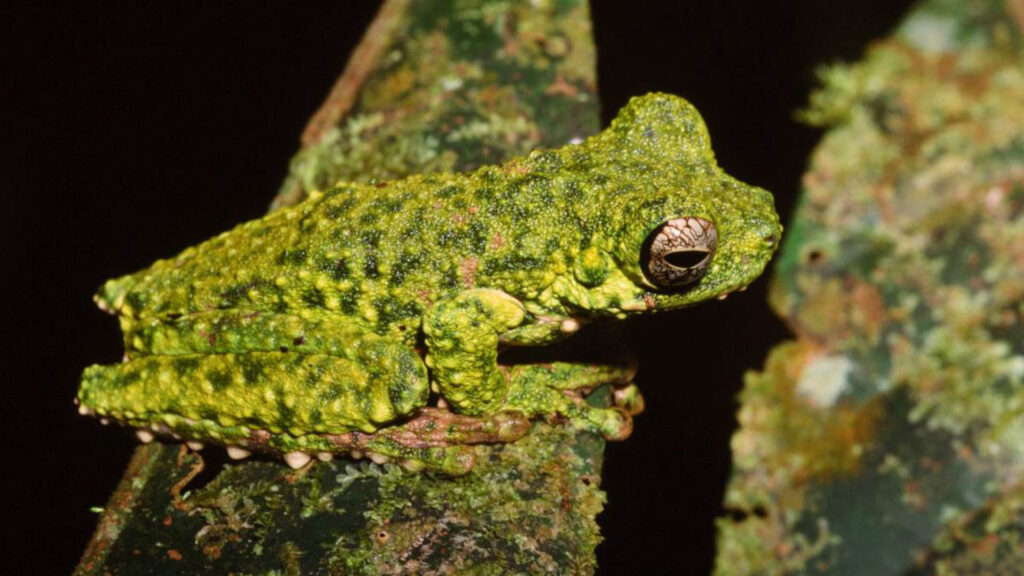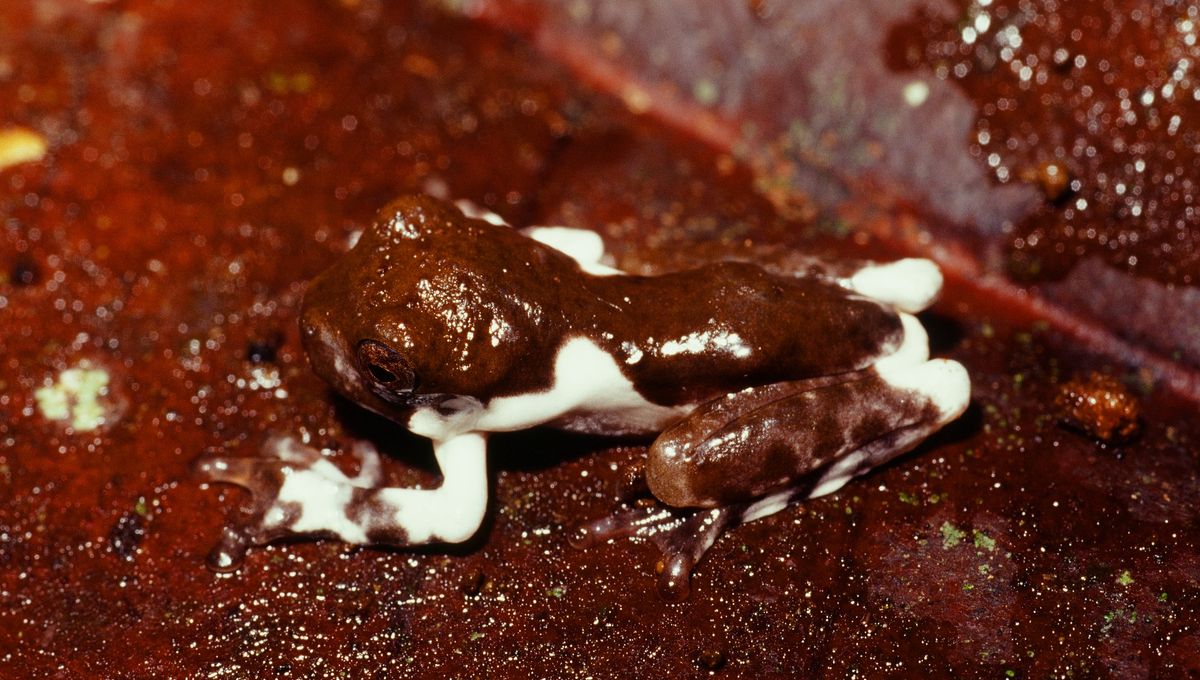A new frog has been found in Papua New Guinea
In the Papua New Guinean jungles, scientists have found a frog that resembles a fresh bird dropping. In order to deter predators from eating it, the recently discovered species imitates a dollop of bird poo.
The Crater Mountain Treehole Frog, according to The Telegraph, is located near water sources that birds use to hydrate themselves. Young frogs have evolved to resemble brown and white globs of poo in order to avoid becoming a treat for passing birds. As they age, the frogs’ appearance changes, turning lime green and white with spots.
“It’s interesting that the little frog coming out looks like bird poo“, said Stephen Richards, a frog expert from the South Australian Museum who led the team that discovered the species.
“What a great strategy to avoid predators! It’s a hypothesis, but I reckon it’s a pretty good one”, he told the Australian Broadcasting Corporation.
The juveniles of the species “have color and patterning that closely resemble bird droppings; we think this is a form of defensive masquerade”, said Dr. Paul Oliver, a scientist from the Queensland Museum who contributed to the findings.
The phenomenon is not limited to the natural world; other insects, such as Orchard Swallowtail butterflies and frogs in Asia and South America, also resemble feces, according to Dr. Richards.
“Papua New Guinea is spectacularly beautiful, and it is very rugged, so it can be difficult to get into a lot of those sites. It definitely has its challenges. But when you have those spectacular finds, it makes it all worthwhile”, he said.
One of the five new species that Dr. Richards and associates from the Queensland Museum and Griffith University recently discovered in the central mountain ranges of Papua New Guinea, one of the world’s richest places for amphibians, is the Crater Mountain Treehole Frog.
On the island of New Guinea, of which Papua New Guinea makes up the eastern half, there are about 540 species of frogs that are known, but it is believed that there are many more that have not yet been properly categorized. The scientific journal Zootaxa reported the researchers’ findings.
“The new species has juveniles with color and patterning that closely resemble bird droppings, suggesting defensive mimicry or masquerade”, they wrote.
The species glues the eggs to tree trunks above tree hollows rather than placing them immediately in rivers or ponds. Tadpoles that have just emerged fall into the water-filled hollows, where they develop into frogs.
The scientific name of the Crater Mountain Treehole Frog is Litoria naispela; the second word in this name means “pretty” or “beautiful” in the pidgin language of Papua New Guinea.

A flash of vivid red distinguishes the abdomen of the red-bellied tree frog, another of the new species, which is supposed to serve as a warning to prospective predators. The Lisa’s tree frog, a third find, was given its name in honor of Dr. Richard’s wife and lives in woods in the limestone karst region of southern Papua New Guinea.
Photos by Steve Richards

